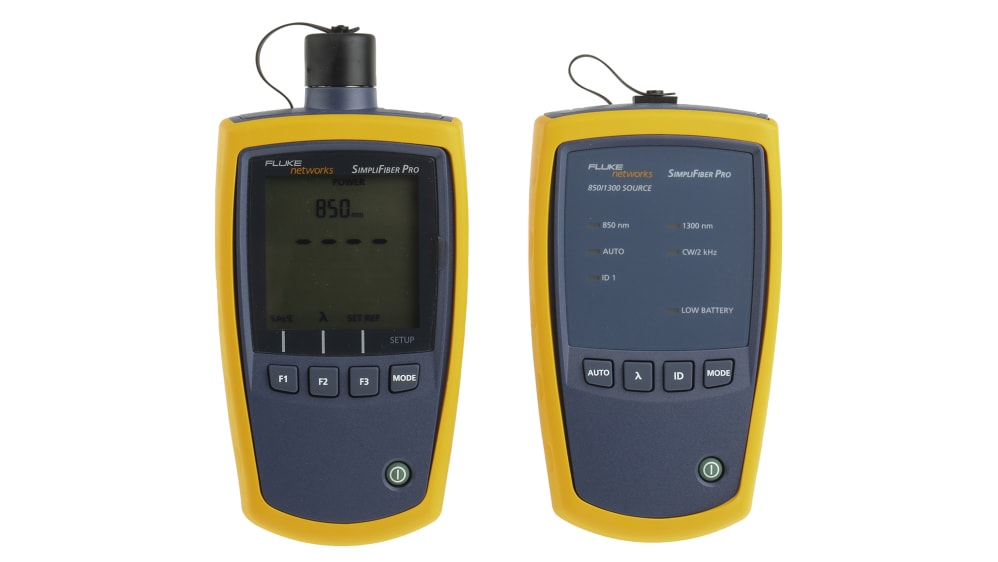A advanced optical fibre diameter analyser supports fibre manufacturing.
A advanced optical fibre diameter analyser supports fibre manufacturing.
Blog Article
Discovering the Perks of Optical Fibre Examining for Enhanced Interaction Solutions
The importance of optical fiber testing in modern interaction systems can not be overstated, as it functions as a foundation for ensuring network integrity and performance. Utilizing innovative methods such as Optical Time-Domain Reflectometry (OTDR) and insertion loss analysis, companies can not only recognize mistakes but likewise optimize their configurations. This aggressive testing method has profound effects for signal quality and functional performance, raising the question of exactly how these techniques add to long-term sustainability in an ever-evolving technical landscape. Comprehending these dynamics is crucial for stakeholders aiming to keep an one-upmanship.
Value of Optical Fibre Screening
The importance of optical fibre testing can not be overstated in today's data-driven atmosphere. As companies increasingly depend on high-speed information transmission for daily procedures, the stability and performance of optical fiber networks are vital. Testing guarantees that these networks can support the large quantities of information produced and sent flawlessly, cultivating reliable interaction and connection.
Optical fiber screening offers numerous critical features, consisting of verifying installation quality, identifying potential faults, and determining overall system efficiency. Normal screening can stop expensive downtimes and service disturbances, permitting companies to preserve operational continuity. Furthermore, it aids in conformity with sector requirements and policies, guaranteeing that fibre optic installments fulfill needed specs for safety and integrity.
Additionally, screening can enhance the long life of fiber optic systems. By proactively identifying concerns such as signal loss, attenuation, or adapter failings, organizations can resolve issues prior to they escalate, therefore extending the life of their framework. In summary, optical fiber testing is not merely a technological requirement yet a tactical financial investment that improves network integrity, maximizes performance, and inevitably supports the development and effectiveness of modern-day communication systems.
Trick Evaluating Approaches

OTDR is an important strategy used to identify mistakes, action splice losses, and assess the general honesty of a fiber optic link. By sending a pulse of light down the fibre and assessing the mirrored light, service technicians can pinpoint places of mistakes and assess the network's efficiency over cross countries.
Insertion loss testing measures the amount of signal loss that happens when light travel through a link or splice. This method is vital for confirming that links meet specified loss thresholds, which is vital for preserving ideal efficiency in interaction systems.
Optical return loss screening evaluates the quantity of light mirrored back in the direction of the resource due to flaws in the fibre or connections. High return loss values indicate better performance and reduced signal degradation.
Together, these testing approaches provide a comprehensive evaluation of fiber optic networks, ensuring their reliability and functionality in diverse interaction applications.
Influence On System Efficiency
Efficient optical fibre testing directly affects the general performance of communication systems. By guaranteeing the integrity of fiber optic cords, testing identifies potential mistakes such as depletion, splice loss, and port misalignment. These concerns can dramatically weaken signal top quality, causing disruptions and decreased information transmission rates.

Additionally, normal optical fibre screening adds to long-lasting system sustainability. It makes it possible for early discovery of wear and tear, permitting prompt maintenance and upgrades prior to major failures take place. This not only extends the life-span of the infrastructure yet also guarantees that interaction blog systems remain competitive in regards to efficiency.
Cost-Effectiveness and Efficiency
Cost-effectiveness is a vital consideration in the implementation and upkeep of optical fiber networks. Implementing robust optical fiber screening procedures can considerably minimize functional prices by identifying problems before they rise right into major problems. fibre testing equipment. By detecting faults, attenuation, and other efficiency limitations early, organizations can stay clear of expensive repairs and downtime, which can disrupt solutions and lead to profits loss
Additionally, effective screening methods enhance the installation process, allowing professionals to function better. This converts to reduce work expenses and faster job conclusion times. Advanced screening equipment, such as Optical Time Domain Reflectometers (OTDRs), allows a precise evaluation of fibre high quality, making sure that only ideal materials are utilized, consequently minimizing waste.
Normal testing also adds to much better source allowance. By comprehending the network's efficiency, companies can make educated decisions concerning upgrades and growths, making certain that investments are made where they are most needed. In summary, optical fibre testing improves cost-effectiveness and effectiveness, sustaining the long-term sustainability and competition of communication systems in a progressively requiring market.
Making Certain Long-Term Integrity
Applying extensive optical fiber testing not only improves cost savings and functional effectiveness however likewise plays a critical function in making sure the lasting check that dependability of communication networks. Constant testing techniques, consisting of attenuation and data transfer assessments, aid recognize possible deterioration in fiber efficiency before it leads to solution disruptions.
By using innovative testing methods, network drivers can pinpoint faults or weak points in the fibre infrastructure, permitting timely remediation. This positive strategy reduces downtime, making certain that interaction systems remain practical and reliable. Regular testing adds to the development of a more resilient network, as drivers can adapt and enhance their facilities based on real-time data insights.
Furthermore, making sure compliance with sector requirements with optical fibre testing strengthens the quality and stability of the whole interaction system. This adherence not only boosts confidence amongst stakeholders however additionally lines up with regulatory demands, which are progressively rigid.
Conclusion
In verdict, optical fibre screening serves as a fundamental element in enhancing communication systems. By utilizing numerous screening techniques, such as OTDR and insertion loss analyses, networks can accomplish optimal efficiency and dependability.
Report this page